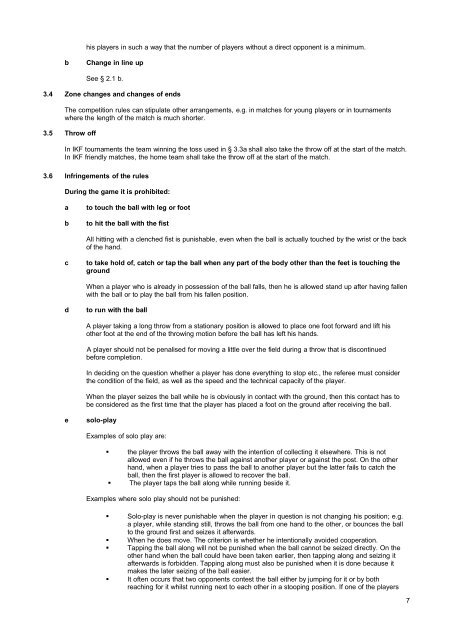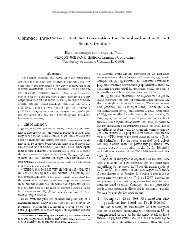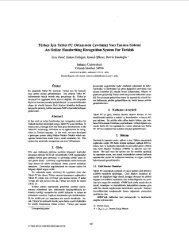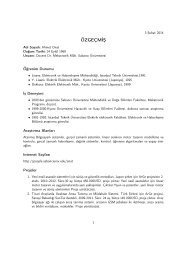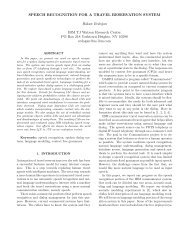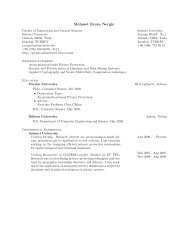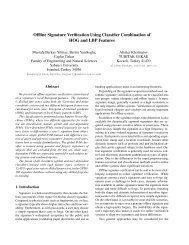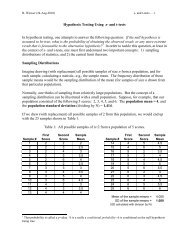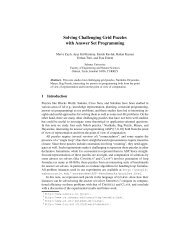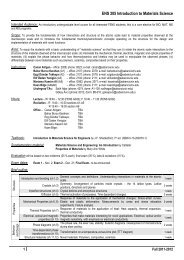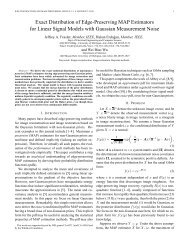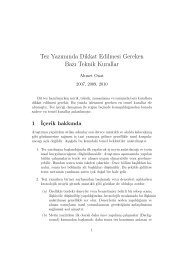Guidance Notes for the Rules of Korfball (from 1 August 2009)
Guidance Notes for the Rules of Korfball (from 1 August 2009)
Guidance Notes for the Rules of Korfball (from 1 August 2009)
You also want an ePaper? Increase the reach of your titles
YUMPU automatically turns print PDFs into web optimized ePapers that Google loves.
his players in such a way that <strong>the</strong> number <strong>of</strong> players without a direct opponent is a minimum.bChange in line upSee § 2.1 b.3.4 Zone changes and changes <strong>of</strong> endsThe competition rules can stipulate o<strong>the</strong>r arrangements, e.g. in matches <strong>for</strong> young players or in tournamentswhere <strong>the</strong> length <strong>of</strong> <strong>the</strong> match is much shorter.3.5 Throw <strong>of</strong>fIn IKF tournaments <strong>the</strong> team winning <strong>the</strong> toss used in § 3.3a shall also take <strong>the</strong> throw <strong>of</strong>f at <strong>the</strong> start <strong>of</strong> <strong>the</strong> match.In IKF friendly matches, <strong>the</strong> home team shall take <strong>the</strong> throw <strong>of</strong>f at <strong>the</strong> start <strong>of</strong> <strong>the</strong> match.3.6 Infringements <strong>of</strong> <strong>the</strong> rulesDuring <strong>the</strong> game it is prohibited:abto touch <strong>the</strong> ball with leg or footto hit <strong>the</strong> ball with <strong>the</strong> fistAll hitting with a clenched fist is punishable, even when <strong>the</strong> ball is actually touched by <strong>the</strong> wrist or <strong>the</strong> back<strong>of</strong> <strong>the</strong> hand.cto take hold <strong>of</strong>, catch or tap <strong>the</strong> ball when any part <strong>of</strong> <strong>the</strong> body o<strong>the</strong>r than <strong>the</strong> feet is touching <strong>the</strong>groundWhen a player who is already in possession <strong>of</strong> <strong>the</strong> ball falls, <strong>the</strong>n he is allowed stand up after having fallenwith <strong>the</strong> ball or to play <strong>the</strong> ball <strong>from</strong> his fallen position.dto run with <strong>the</strong> ballA player taking a long throw <strong>from</strong> a stationary position is allowed to place one foot <strong>for</strong>ward and lift hiso<strong>the</strong>r foot at <strong>the</strong> end <strong>of</strong> <strong>the</strong> throwing motion be<strong>for</strong>e <strong>the</strong> ball has left his hands.A player should not be penalised <strong>for</strong> moving a little over <strong>the</strong> field during a throw that is discontinuedbe<strong>for</strong>e completion.In deciding on <strong>the</strong> question whe<strong>the</strong>r a player has done everything to stop etc., <strong>the</strong> referee must consider<strong>the</strong> condition <strong>of</strong> <strong>the</strong> field, as well as <strong>the</strong> speed and <strong>the</strong> technical capacity <strong>of</strong> <strong>the</strong> player.When <strong>the</strong> player seizes <strong>the</strong> ball while he is obviously in contact with <strong>the</strong> ground, <strong>the</strong>n this contact has tobe considered as <strong>the</strong> first time that <strong>the</strong> player has placed a foot on <strong>the</strong> ground after receiving <strong>the</strong> ball.esolo-playExamples <strong>of</strong> solo play are:• <strong>the</strong> player throws <strong>the</strong> ball away with <strong>the</strong> intention <strong>of</strong> collecting it elsewhere. This is notallowed even if he throws <strong>the</strong> ball against ano<strong>the</strong>r player or against <strong>the</strong> post. On <strong>the</strong> o<strong>the</strong>rhand, when a player tries to pass <strong>the</strong> ball to ano<strong>the</strong>r player but <strong>the</strong> latter fails to catch <strong>the</strong>ball, <strong>the</strong>n <strong>the</strong> first player is allowed to recover <strong>the</strong> ball.• The player taps <strong>the</strong> ball along while running beside it.Examples where solo play should not be punished:• Solo-play is never punishable when <strong>the</strong> player in question is not changing his position; e.g.a player, while standing still, throws <strong>the</strong> ball <strong>from</strong> one hand to <strong>the</strong> o<strong>the</strong>r, or bounces <strong>the</strong> ballto <strong>the</strong> ground first and seizes it afterwards.• When he does move. The criterion is whe<strong>the</strong>r he intentionally avoided cooperation.• Tapping <strong>the</strong> ball along will not be punished when <strong>the</strong> ball cannot be seized directly. On <strong>the</strong>o<strong>the</strong>r hand when <strong>the</strong> ball could have been taken earlier, <strong>the</strong>n tapping along and seizing itafterwards is <strong>for</strong>bidden. Tapping along must also be punished when it is done because itmakes <strong>the</strong> later seizing <strong>of</strong> <strong>the</strong> ball easier.• It <strong>of</strong>ten occurs that two opponents contest <strong>the</strong> ball ei<strong>the</strong>r by jumping <strong>for</strong> it or by bothreaching <strong>for</strong> it whilst running next to each o<strong>the</strong>r in a stooping position. If one <strong>of</strong> <strong>the</strong> players7


